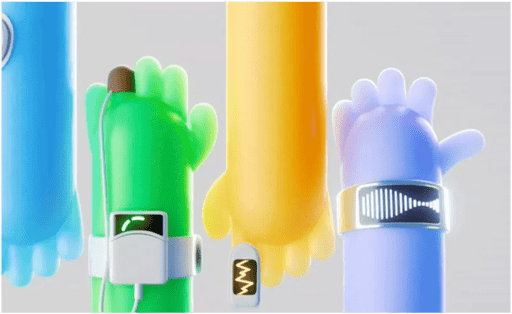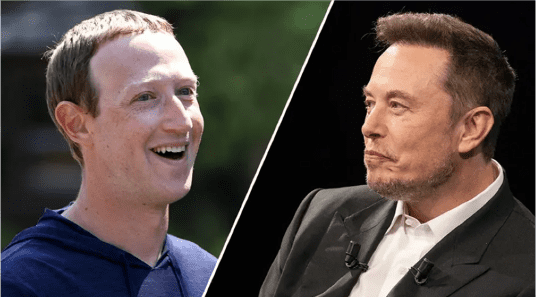
It may be getting harder to leave your smart wearable for the sake of your health
The world's first portable electrocardiograph was an 85-pound backpack, and now a 10-gram patch attached to your chest can transmit electrocardiograms uninterrupted for two weeks. The Apple Watch, which is worn by an estimated 100 million people, can send a text message to alert people when their heartbeat is irregular. Wearable sensors on the arms, wrists and fingers can now report arrhythmias, blood sugar levels, blood oxygen and other health indicators. Medical journals have also proposed a more ambitious vision - wearable devices can monitor patients with chronic diseases, eliminating the need for frequent hospital visits. They can spot potential health problems before a stroke or diabetes develops. The forces of health technology and wearables are converging. Tech giants like Apple (AAPL) and Alphabet's (GOOGL) Google are adding health features to their products. Medical technologists like electrocardiogram patch maker iRhythm Technologies or blood sugar monitor makers DexCom (DXCM) and Abbott Laboratories (ABT) are taking their devices beyond the clinic. "In the sensor world, people started on the consumer side and wanted to get into health care," said Kevin Sayer, chief executive of Decon Medical. "In health care, we're trying to be more consumer oriented, and I think all of those things are sort of colliding." Early bets favored the tech giants, with every health-related announcement from Apple, Google or Samsung Electronics hitting medical tech stocks. But changing doctors' practices will also require sustained investment in clinical trials. Big tech companies have cut back on investments in health care. Now it seems that medical technologists will be at the vanguard of the digital health revolution - with smartwatches and smart rings bringing them more customers who need to be diagnosed. Blake Goodner, co-founder of Bridger Management, a hedge fund focused on health care, said: "A group of medtech companies focused on digital health are maturing and reaching a scale where they can not only be profitable but also make investments to compete with larger tech companies." Tech giants aren't getting out of the health business. Apple's smartwatch has an electronic heart rate sensor that generates a single-point electrocardiogram, a wrist temperature sensor, and an accelerometer that can detect violent falls. Hundreds of millions of people are wearing smartwatches with health features from Apple or its rivals Samsung and Garmin.

TikTok to introduce a new feature that can clone your voice with AI in just 10 second
Use of AI is certainly the hottest topic in the tech industry and every major and minor player in this industry is using AI in some way. Tools like ChatGPT can help you do a wide range of task and even help you generate images. The other thing is - Voice Cloning. OpenAI recently introduced a voice engine that can generate clone of your voice with just 15 seconds of your audio. There is no shortage of voice cloning tools on the web which can help you do the same. The newest tech giant which is going to use AI to clone your voice is - TikTok. We all know TikTok, posting short videos with filters, effects and all other kind of things. So TikTok found a way to use the voice cloning AI in its app. TikTok is working on this feature, which does not seem to really have a proper name, it just references it as "Create your voice with AI" and "TikTok Voice Library". In the latest version of TikTok I came across some strings which indicates that TikTok is working on it. I was also able to access the initial UI which introduces the feature and was able to see the terms and condition of "TikTok Voice Library" which user have to accept in order to use the feature. Here are the screenshots from the app- As you can in the screenshot above, this is the initial screen which a user will see for the first time they access this feature. Tiktok claims that it can create an AI verison of your voice in just 10 seconds. The generated AI voice clone can be used with text-to-speech in TikTok videos. It also outline the process of how it will work. You have to record yourself speaking and TikTok will process the voice and use information about your voice to generate your AI voice. When it comes to privacy, your AI voice will stay private and you can delete it anytime. Tapping the "Continue" button brings "TikTok Voice Library Terms" screen which a user should definitely read, you can see here and read as well - How it will work After agreeing to terms and conditions I was introduced with a screen where TikTok will show some text and user have to press the record button while reading the text. Now unfortunately I did not see any text. This is probably because the feature is not fully ready or the backend from which it fetches the text is not live yet. Manually pressing the record button and saying random things also shows an error. So, it's also not possible to provide any sample voice generated with it and see how it compares to other voice cloning competitors. If it starts working someday, it will process your recorded voice and generate AI version of your voice. Here is a screenshot of that screen - My guess is that whenever the feature starts working, users have to clone voice only one time and the saved AI voice can be used through the text-to-speech method to add voice in your videos. You just have to type the words, choice is yours :p

Samsung Electronics wins cutting-edge AI chip order from Japan's Preferred Networks
SEOUL, July 9 (Reuters) - Samsung Electronics (005930.KS), opens new tab said on Tuesday it won an order from Japanese artificial intelligence company Preferred Networks to make chips for AI applications using the South Korean firm's 2-nanometre foundry process and advanced chip packaging service. It is the first order Samsung has revealed for its cutting-edge 2-nanometre chip contract manufacturing process. Samsung did not elaborate on the size of the order. The chips will be made using high-tech chip architecture known as gate all-around (GAA) and multiple chips will be integrated in one package to enhance inter-connection speed and reduce size, Samsung said in a statement. South Korea's Gaonchips Co (399720.KQ), opens new tab designed the chips, Samsung said. The chips will go toward Preferred Networks' high-performance computing hardware for generative AI technologies such as large language models, Junichiro Makino, Preferred Networks vice president and chief technology officer of computing architecture, said in the statement.

Zuckerberg surfed and drank beer on vacation, Musk: I prefer to work
After Meta CEO Mark Zuckerberg posted a video on his Facebook and Instagram accounts of his free time during the Independence Day holiday on the X platform, Musk said, "I prefer to work." Zuckerberg posted a video of himself surfing on a hydrofoil in a tuxedo, waving an American flag and drinking a beer, and wrote: "Happy birthday America." The video quickly went viral, and after greg shared it on the X platform, Musk replied: "I hope he continues to have fun on the yacht." I prefer to work." Musk, a workaholic, attended the 29th annual Barron Investment Conference in November 2022, where he said: "My workload went from 78 hours a week to 120 hours a week..." In 2018, he slept on the floor of the Gigafactory in Fremont in an effort to ramp up production of the Tesla Model 3.

The largest password leak in history exposes nearly 10 billion credentials
The largest collection of stolen passwords ever has been leaked to a notorious crime marketplace, according to cybersecurity researchers at Cybernews. This leak, dubbed RockYou2024 by its original poster “ObamaCare,” holds a file containing nearly 10 billion unique plaintext passwords. Allegedly gathered from a series of data breaches and hacks accumulated over several years, the passwords were posted on July 4th and hailed as the most extensive collection of stolen and leaked credentials ever seen on the forum. “In its essence, the RockYou2024 leak is a compilation of real-world passwords used by individuals all over the world,” the researchers told Cybernews. “Revealing that many passwords for threat actors substantially heightens the risk of credential stuffing attacks.” Credential stuffing attacks are among the most common methods criminals, ransomware affiliates, and state-sponsored hackers use to access services and systems. Threat actors could exploit the RockYou2024 password collection to conduct brute-force attacks against any unprotected system and “gain unauthorized access to various online accounts used by individuals whose passwords are included in the dataset,” the research team said. This could affect online services, cameras and hardware This could affect various targets, from online services to internet-facing cameras and industrial hardware. “Moreover, combined with other leaked databases on hacker forums and marketplaces, which, for example, contain user email addresses and other credentials, RockYou2024 can contribute to a cascade of data breaches, financial frauds, and identity thefts,” the team concluded. However, despite the seriousness of the data leak, it is important to note that RockYou2024 is primarily a compilation of previous password leaks, estimated to contain entries from a total of 4,000 massive databases of stolen credentials, covering at least two decades. This new file notably includes an earlier credentials database known as RockYou2021, which featured 8.4 billion passwords. RockYou2024 added approximately 1.5 billion passwords to the collection, spanning from 2021 through 2024, which, though a massive figure, is only a fraction of the reported 9,948,575,739 passwords in the leak. Thus, users who have changed their passwords since 2021 may not have to panic about a potential breach of their information. That said, the research team at Cybernews stressed the importance of maintaining data security. In response to the leak, they recommend immediately changing the passwords for any accounts associated with the leaked credentials, ensuring each password is strong and unique and not reused across different platforms. Additionally, they advised enabling multi-factor authentication (MFA), which requires an extra form of verification beyond the password, wherever possible, to strengthen cyber security. Lastly, tech users should utilize password manager software, which securely generates and stores complex passwords, mitigating the risk of password reuse across multiple accounts.





